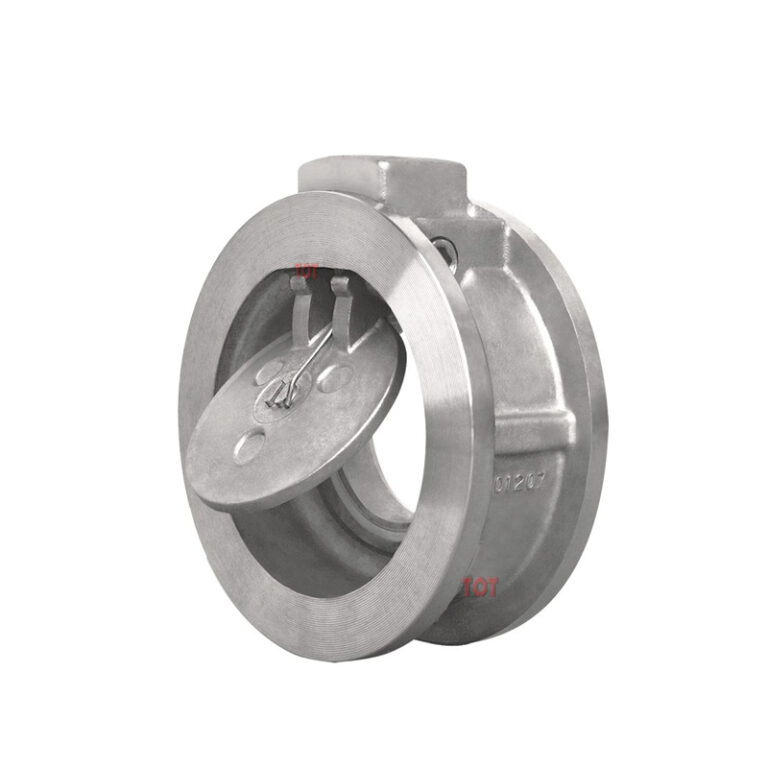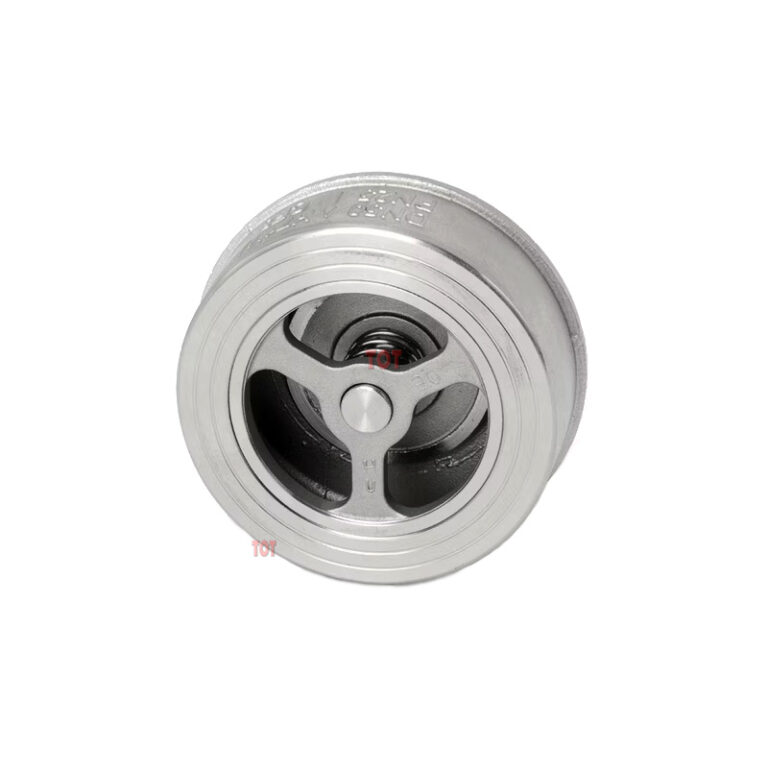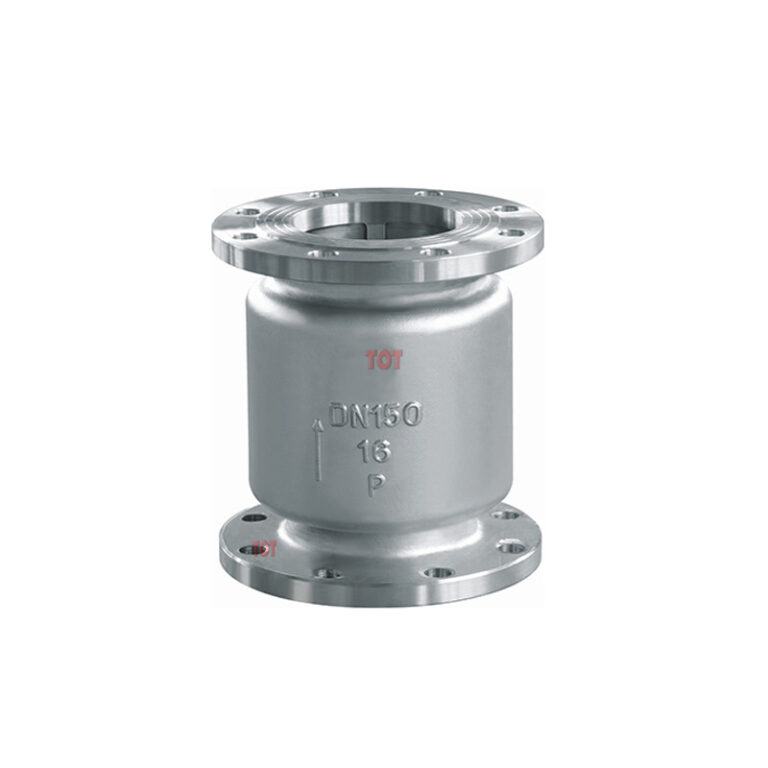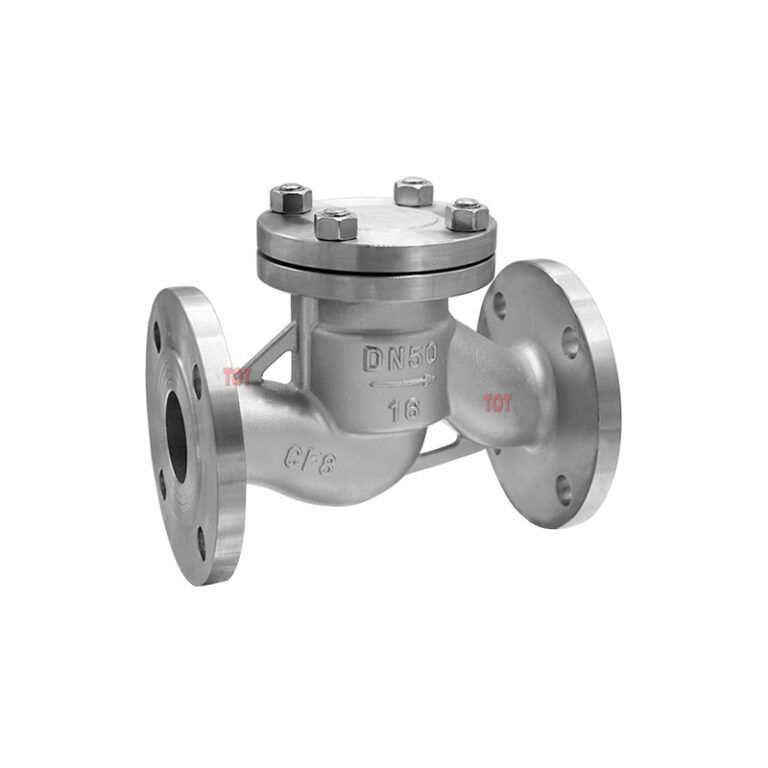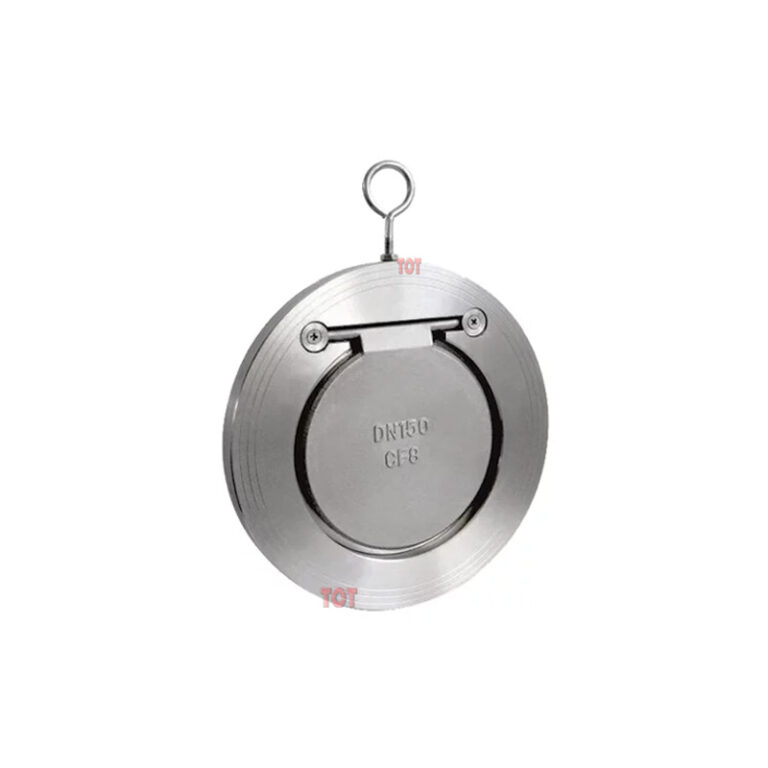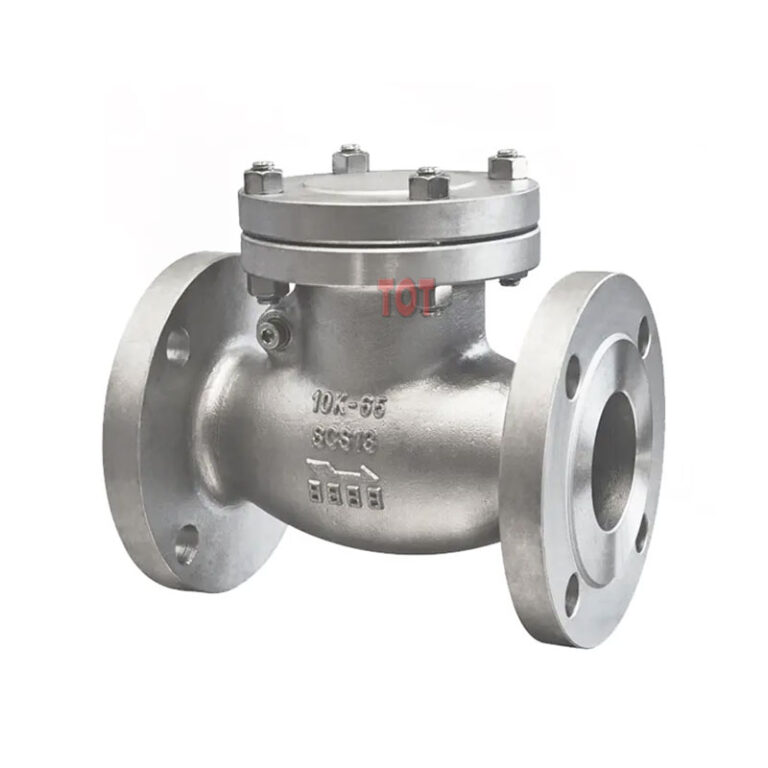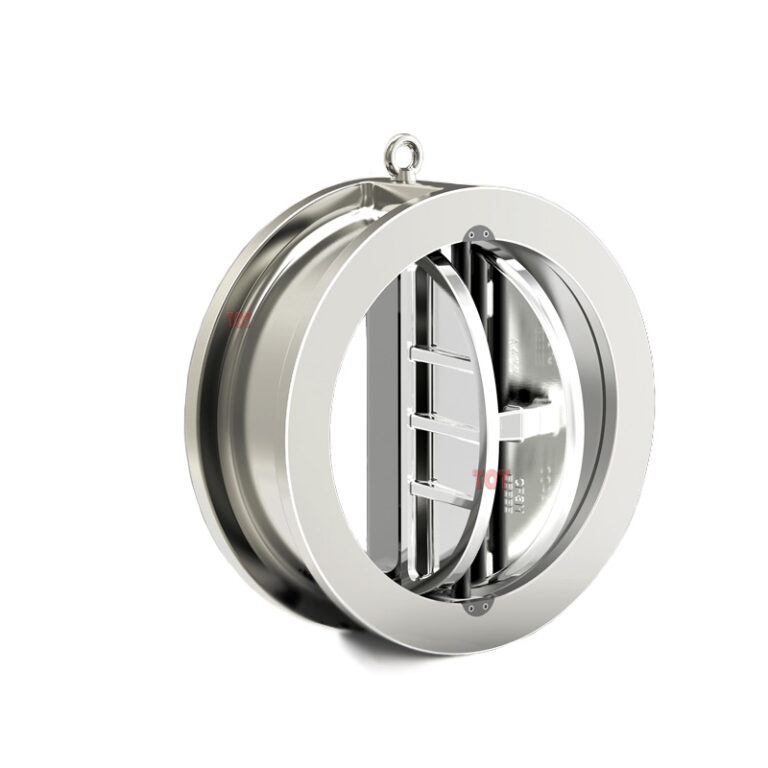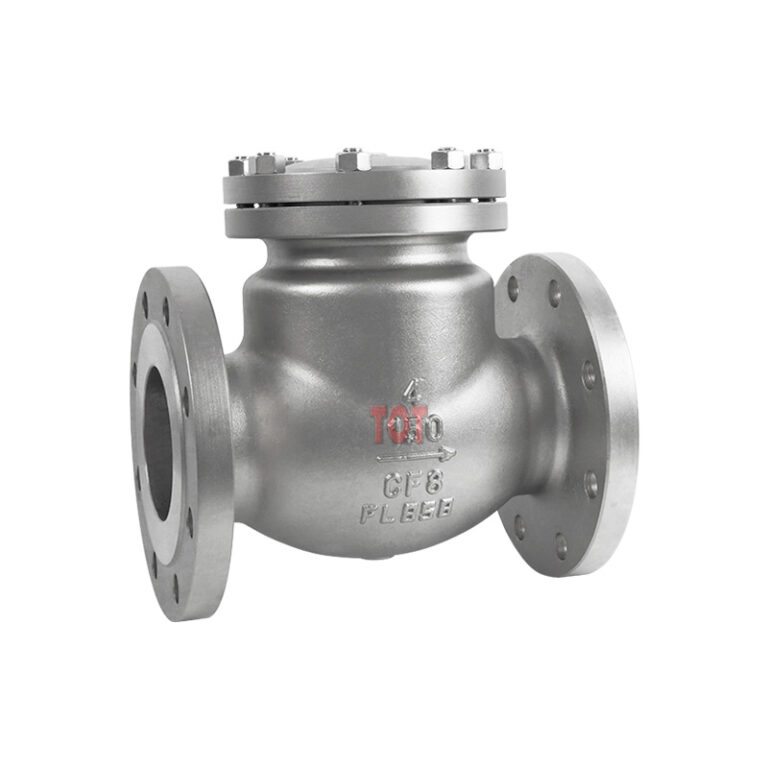Stainless Steel Check Valves Manufacturers
A stainless steel check valve is a stainless steel valve designed to restrict the flow of fluid (liquid or gas) in one direction and automatically prevent backflow in a piping system. It operates without human intervention—it opens when fluid flows in the desired direction and closes when fluid flows in the opposite direction. This feature protects equipment, prevents contamination, and ensures system efficiency.
With a wide range of products, such as SS316 check valves, SS304 check valves, wafer check valves, swing check valves, and more, we can provide the ideal solution for your unique industrial needs.
Across industries around the world, keeping fluids flowing smoothly and efficiently is critical to ensuring operational reliability and safety. Whether you manage a water treatment system, a chemical processing plant, or an oil and gas pipeline, the need for high-performance check valves is unquestionable. When you choose our stainless steel check valves, you are investing in quality, durability, and the peace of mind that comes with top-notch engineering.
If you are ready to experience the reliability and efficiency that stainless steel check valves can bring to your business, contact us today. Our team can help you select the right valve solution, provide detailed specifications, and guide you through the purchasing process.
Be careful when choosing a new valve supplier, the disappointment of poor quality can last much longer than the joy of a low price!
Why Stainless Steel Check Valves?
When you’re sourcing check valves for your systems, the material plays a pivotal role in determining the valve’s durability, resistance to corrosion, and long-term performance. Stainless steel stands out as the material of choice, offering unparalleled resistance to rust, corrosion, and wear, especially in high-pressure, high-temperature, and chemically demanding environments. By choosing stainless steel check valves, you can ensure the following:
- Corrosion Resistance: Stainless steel, particularly grades SS316 and SS304, excels in resisting harsh chemicals, water, and environmental stressors.
- Longevity: Stainless steel’s durability means fewer replacements and reduced maintenance costs over the lifespan of your system.
- Precision Control: Stainless steel valves offer precise flow control, minimizing downtime and ensuring efficient operation.
Types of Stainless Steel Check Valves
Let’s dive deeper into the specific types of stainless steel check valves you’ll find in our range and how they can benefit your operations.
SS316 Check Valves
When you’re dealing with highly corrosive environments such as chemical processing, marine applications, or food industries, SS316 Check Valves are the ideal choice. These valves are made from 316 stainless steel, a high-performance alloy known for its superior resistance to corrosion, pitting, and crevice formation in harsh environments. If you’re working in industries where fluid integrity and long-term durability are essential, choosing SS316 ensures your system runs smoothly for years to come.
With SS316 Check Valves, you’ll benefit from:
- Advanced Corrosion Resistance: Ideal for applications exposed to chloride-rich environments like seawater and chemicals.
- Temperature Tolerance: These valves can handle higher temperatures without degrading.
- Reliable Performance: The robust construction of SS316 Check Valves ensures that your systems are protected from backflow, safeguarding the integrity of your process.
SS304 Check Valves
If you’re looking for a balance between cost-effectiveness and durability, SS304 Check Valves are an excellent solution. SS304, the most common stainless steel grade, offers reliable corrosion resistance and strength in a wide range of applications. It’s particularly well-suited for industries such as food and beverage, HVAC, and water treatment.
Here’s why you should consider SS304 Check Valves:
- Cost-Effective: While offering solid corrosion resistance, SS304 is more affordable than SS316, making it ideal for a wide range of applications.
- Versatile Use: These valves are perfect for general industrial applications where environmental conditions are less harsh.
Low Maintenance: With regular maintenance, SS304 Check Valves can serve your systems effectively for many years.
SS Wafer Type Check Valves
When space is a concern, the Wafer Type Check Valve provides a perfect solution. These compact valves are installed between two flanges in your system, offering high efficiency without taking up too much space. Wafer Type Check Valves are typically lighter and more cost-effective, which makes them an excellent option for industries like water treatment and pipeline systems.
Why Choose Wafer Type Check Valves?
- Space-Saving Design: These valves are perfect for applications where space is limited.
- Quick and Easy Installation: The wafer-style design allows for quick and easy integration into your system.
- Cost-Effective Solution: By saving space and reducing material costs, these valves help lower your overall system investment.
Stainless Steel Swing Check Valves
If you’re working with high-flow systems, Swing Check Valves are an ideal choice. These valves use a hinged disc to control the flow direction and allow for easy opening and closing. The swing mechanism provides excellent sealing and prevents backflow, making them suitable for large pipeline systems in industries like oil and gas, power generation, and water treatment.
Benefits of Swing Check Valves:
- High-Flow Capacity: Designed for applications with large flow volumes, Swing Check Valves can handle a broad range of fluids.
- Durable Design: These valves are built to last, even in demanding industrial environments.
- Efficient Backflow Prevention: The disc swings to block reverse flow, preventing contamination and system damage.
Stainless Steel Double Check Valves
When it comes to critical systems where backflow could lead to contamination or safety issues, Double Check Valves provide an extra layer of protection. With two check valves in series, these valves ensure that backflow is completely prevented, offering double the security for your system.
Advantages of Double Check Valves:
- Extra Protection: Provides two barriers to prevent any reverse flow.
- Ideal for High-Risk Systems: Perfect for applications in drinking water systems, irrigation, and pharmaceutical industries.
- Low Maintenance: With proper care, Double Check Valves offer long-lasting protection.
Stainless Steel Threaded Check Valves
For smaller systems or for quick, cost-effective installations, Threaded Check Valves are an excellent option. These valves feature threaded ends that allow easy attachment to pipes, making installation fast and hassle-free.
Why go for Threaded Check Valves?
- Quick and Simple Installation: The threaded connection makes these valves easy to install in most systems.
- Cost-Effective: A budget-friendly solution for smaller systems.
- Reliable Flow Control: Ensures smooth fluid flow while preventing backflow.
SS Disc Check Valves
SS Disc Check Valves feature a unique disc design that ensures tight sealing and minimal leakage. The design also allows for efficient flow control, making these valves ideal for a variety of industrial applications where quick and reliable shut-off is crucial.
SS Non-Return Valves
Also known as One-Way Valves, SS Non-Return Valves prevent backflow in your piping system, ensuring that fluids only flow in one direction. These are essential for preventing damage to equipment and maintaining system efficiency.
Stainless Steel Sanitary Check Valves
If your industry involves food, beverage, or pharmaceutical manufacturing, Sanitary Check Valves are critical. Our stainless steel sanitary models ensure safe, hygienic fluid flow with easy cleaning and maintenance. They are built to meet the highest sanitary standards, providing a secure, efficient system for your business.
Technical Specifications and Industry Standards
To ensure your system’s safety and performance, our stainless steel check valves are engineered and manufactured in accordance with internationally recognized standards, including:
- Standards: API 6D / ASME B16.34 / EN 12334
- Pressure Ratings: PN10/PN16 and ANSI Class 150 to Class 600
- Size Range: 1/2″ to 24″ depending on valve type and design
- End Connections: Flanged, threaded (NPT/BSPT), butt-welded, socket-welded
- Test Standards: 100% hydrostatic and air testing as per API 598 or EN 12266
Whether you’re working in low-pressure sanitary applications or high-pressure chemical processing, we provide a wide range of models to suit your needs.
Typical Applications Across Industries
Our stainless steel check valves are trusted by engineers and project managers across a range of industries, including:
Water & Wastewater Treatment: Prevents backflow and contamination in clean water and sewage lines.
- Chemical & Petrochemical: Resists aggressive acids and solvents.
- Oil & Gas: Suitable for upstream and downstream applications under extreme pressure and temperature.
- Food & Beverage: Sanitary models ensure hygienic operation and easy cleaning.
- Pharmaceutical & Biotechnology: Delivers sterile flow control with FDA-compliant materials.
- HVAC & Fire Protection: Enhances system safety and performance.
Wherever you need reliable, long-lasting check valve performance, we’re ready to support your operation.
How to Choose the Right Stainless Steel Check Valve?
Choosing the right check valve for your system depends on several key factors:
- Operating Pressure and Temperature: Ensure the valve material and design can withstand your system’s conditions.
- Media Type: Know whether the fluid is corrosive, abrasive, or hygienic to select suitable materials like SS316 or CF8M.
- Installation Space: Wafer or inline types are better suited for compact spaces.
- Connection Type: Choose from flanged, threaded, or welded ends based on your system’s layout.
- Flow Direction and Speed: Consider spring-loaded or swing valves based on how fast and in which direction the media flows.
Still unsure? Our technical team is always here to assist you in evaluating your project requirements.
Installation & Maintenance Tips
Proper installation and maintenance can dramatically extend the life of your stainless steel check valves:
- Install According to Flow Direction: Check the arrow marking on the valve body.
- Allow Space for Removal: Especially for inline or wafer types, leave access for inspection.
- Clean System Before Startup: Prevent debris from damaging internal parts.
- Routine Inspection: Check seals, springs, and seats periodically.
- Lubricate If Needed: Some models benefit from occasional lubrication for smoother performance.
Ready to secure reliable, corrosion-resistant flow control? Contact us today to get your stainless steel check valve solution tailored to your needs.
* We are not just providing simple quotes but experts in selection, calculation, and drawing.
FAQ
It depends on your application. Swing check valves use a disc on a hinge and are best for low-resistance, high-flow systems. Spring check valves close faster thanks to an internal spring—ideal when you need tight backflow control, especially in vertical or pulsating flows. Inline check valves fit directly into pipelines and are perfect for space-saving installations with minimal disruption to the flow.
Yes, you can choose from our high-pressure stainless steel check valve series. These are built for strength and tested to handle pressure ratings from ANSI Class 150 up to 600. You’ll have peace of mind knowing your system is protected—even under demanding pressure conditions.
You can select from a variety of end types including:
- Threaded(NPT, BSPT) for quick, compact installations
- Flanged for secure connections in larger systems
- Welded for permanent, leak-free joints
Let us know your pipe specs, and we’ll match the right connection for your system.
Absolutely. Our stainless steel sanitary check valves are made from SS316 or CF8M with a polished interior and food-safe seals. If you're in food processing, brewing, or pharmaceuticals, you’ll meet both hygiene and CIP (clean-in-place) requirements with ease.
Technically, there’s no difference—both refer to valves that allow flow in one direction. However, in practice, “one-way valve” is often used in general terms or non-industrial contexts, while “check valve” is the standard industrial term, especially when specifying materials, pressure ratings, and performance.
